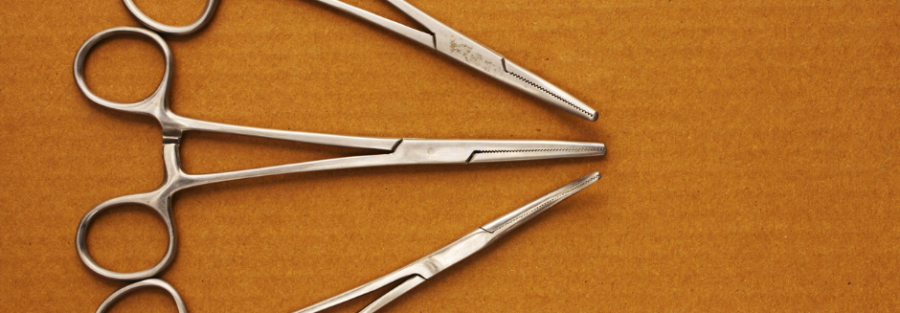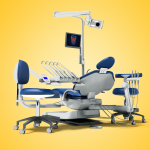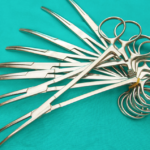In surgical procedures, achieving hemostasis is of utmost importance. Artery forceps, also known as hemostats or clamps, play a critical role in controlling bleeding during surgeries. These forceps come in various designs, with straight artery forceps and curved artery forceps being the two main types. Straight artery forceps vs. Curved artery forceps: Which one you should choose? Understanding their differences, applications, potential risks, and surgeons’ preferences is crucial for optimizing surgical outcomes. By the best Nazmed SMS Sdn Bhd
As surgical instrument experts in Malaysia, in this article, we are going to explain the key differences between Straight artery forceps & curved artery forceps.
1. Straight Artery Forceps
Straight artery forceps, as the name implies, have a straight shape with jaws that are parallel to each other. They are commonly used in various surgical specialties for clamping blood vessels, tissues, or other structures. These forceps are designed to provide a firm and secure grip on vessels, ensuring minimal tissue damage while effectively controlling bleeding.
Uses:
- Straight artery forceps are primarily employed in situations where a straight, direct approach is necessary, such as when accessing vessels in open surgeries or when managing large vessels with relatively straightforward trajectories.
- These forceps are suitable for grasping and holding larger vessels, tissues, or organs, as their straight design allows for more extensive contact with the target area.
Risk Factors:
- If not used with precision, straight artery forceps may increase the risk of tissue damage or accidental injury to adjacent structures due to their unidirectional jaw alignment.
- In inexperienced hands, there is a risk of causing tissue trauma or blood vessel perforation, potentially leading to bleeding complications.
Surgeons’ Preferences:
- Surgeons who prefer the straightforward, linear approach often favor straight artery forceps for procedures where a direct grip on the vessel is required.
- They are popular among surgeons with expertise in open surgeries or those dealing with larger blood vessels and tissues.
2. Curved Artery Forceps
Curved artery forceps are surgical instruments that feature a gently curved design, with the jaws forming a slight angle concerning the handles. This curvature allows for enhanced visibility and access to vessels or tissues situated in deeper or challenging anatomical regions.
Uses:
- Curved artery forceps are particularly advantageous in surgeries requiring a more delicate approach, such as in laparoscopic or minimally invasive procedures.
- They excel at accessing vessels in hard-to-reach areas, allowing for better maneuverability and reduced tissue trauma.
Risk Factors:
- If excessive force is applied, the curvature of these forceps may lead to uneven pressure distribution on the vessel, potentially causing vessel damage or thrombosis.
- Inappropriately sized or angled forceps might result in slipping or insufficient vessel occlusion, leading to persistent bleeding.
Surgeons’ Preferences:
- Surgeons who frequently perform laparoscopic or minimally invasive surgeries often prefer curved artery forceps due to their versatility and adaptability to confined spaces.
- They are well-suited for procedures that demand precise control over smaller vessels or tissues.
Straight Artery forceps Vs. Curved Artery forceps
Both straight artery forceps and curved artery forceps are indispensable tools in the hands of skilled surgeons, each with its unique benefits and considerations. The choice between the two depends on the surgical context, vessel size, and the surgeon’s preference and expertise. While straight artery forceps offer a direct approach and work well in open surgeries and larger vessels, curved artery forceps excel in intricate procedures and confined spaces, from SMS (Surgical Medical Supplies)
To minimize risks associated with artery forceps usage, it is crucial for surgeons to receive proper training and continually refine their technique. Adherence to best practices ensures that these instruments serve their primary purpose of achieving hemostasis while safeguarding the well-being of patients during surgeries.
Frequently Asked Questions
1. What are the primary differences between straight and curved artery forceps?
Straight artery forceps have a linear, parallel jaw alignment, while curved artery forceps feature a gentle curve that forms an angle between the jaws and handles. The design of each type determines its specific applications in surgical procedures.
2. Which type of artery forceps is better for laparoscopic surgeries?
Curved artery forceps are preferred for laparoscopic surgeries due to their enhanced maneuverability and better access to vessels and tissues in confined spaces.
3. Can I use straight artery forceps for delicate procedures?
While straight artery forceps can be used in some delicate situations, curved artery forceps are generally more suitable for precise control over smaller vessels or tissues in intricate procedures.
4. Are there any specific risks associated with using curved artery forceps?
Using curved artery forceps requires attention to the vessel’s curvature and proper technique to avoid uneven pressure distribution, which could potentially cause vessel damage or thrombosis.
5. Can straight artery forceps be used for clamping vessels in minimally invasive surgeries?
Straight artery forceps can be used in certain minimally invasive procedures, but curved artery forceps are often preferred for their adaptability to restricted spaces and improved visibility.
6. Are there any size variations in straight and curved artery forceps?
Both types of artery forceps come in various sizes, allowing surgeons to choose the appropriate instrument based on the vessel or tissue they need to clamp. Contact us for more details.
7. Which type of artery forceps do experienced surgeons usually prefer?
Experienced surgeons often have a preference based on their familiarity and expertise. Some may favor straight artery forceps for open surgeries, while others opt for curved artery forceps, especially in minimally invasive procedures.
8. Can I use curved artery forceps for clamping larger vessels?
Curved artery forceps can be used to clamp larger vessels but may not provide the same level of direct grip as straight artery forceps in certain scenarios.
9. Are there any training courses available for learning proper artery forceps usage?
Many surgical training programs and workshops offer hands-on training for mastering the proper usage of artery forceps, ensuring safe and effective handling during surgical procedures.
10. What precautions should I take when using artery forceps to minimize risks?
Surgeons should undergo adequate training, carefully select the appropriate forceps for the procedure, and ensure proper technique to avoid tissue damage, vessel perforation, or other complications.






